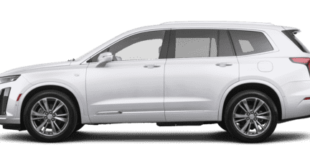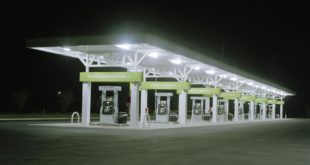
Overview
While luxury brands such as Audi, Jaguar, and Tesla grab headlines with luxury EVs, the 2021 Nissan Leaf quietly serves the proletariat an affordable, all-electric method of transportation. While not as flashy as those premium-branded offerings, the Leaf offers a spacious cabin. The Leaf’s starting price is attractively low, even when compared to mainstream EVs such as the Chevy Bolt EV, the Kia Niro EV, and the Hyundai Ioniq Electric. But the standard 40.0-kWh battery pack is good for only 149 miles of estimated driving range, and the Plus models—which come with a larger 62.0-kWh pack that boosts range up to a more competitive 226 miles—cost a lot more. Those looking for driver-assistance features and semi-autonomous driving capabilities will find the Leaf also offers a decent set of such technologies.
What’s New for 2021?
Nissan’s all-electric Leaf scoots into 2021 with no changes at all.
Pricing and Which One to Buy
The best deal here is the S Plus because it carries a reasonable price, the longest driving range, the more powerful electric motor, and still offers a decent set of standard equipment. It has an 8.0-inch infotainment system with Apple CarPlay and Android Auto capability, automatic climate control, keyless entry with push-button start, and automatic headlamps.
Engine, Transmission, and Performance
The standard Leaf models come with a 147-horsepower electric motor that powers the front wheels; a 40.0-kWh battery pack provides the juice. Leaf Plus models come with a gutsier, 214-hp electric motor and a larger 62.0-kWh battery. The former managed a 7.4-second zero-to-60-mph time at our test track, but it feels perkier than this number suggests thanks to the instantaneous power delivery of the electric motor. This result makes it quicker than the Volkswagen e-Golf, but slower than the Bolt EV, the BMW i3s, and the Model 3. Upgrading to the more powerful Plus models will no doubt result in quicker acceleration, but we won’t know until we are able to test them. The Leaf’s e-Pedal feature allows the driver to toggle back and forth between regenerative braking modes, one of which allows the car to coast when the driver lifts off the throttle and another that slows the car when you take your foot off the gas and uses that energy to recharge the battery.
Range, Charging, and Battery Life
The Leaf can be plugged in to a regular 120-volt outlet or a 240-volt outlet, but the charging times vary dramatically between the two. On a 240-volt connection, Nissan says both the standard Leaf’s battery and the larger one in the Leaf Plus can be replenished in seven hours. A DC fast-charging connection is optional on S models and standard on SV, SL, and all Plus trims. The standard Leaf models all come with a 40.0-kWh battery which provides a relatively limited range of 150 miles. This might be enough range for some drivers with short commutes but it’s less than half of what the Model 3’s Long Range model provides. The Leaf Plus provides more driving range thanks to its larger battery pack. To unlock the Leaf’s maximum 226 miles of driving range, you’ll want to go with the S Plus trim level, as the SV Plus and SL Plus models are only rated for 215 miles.
Fuel Economy and Real-World MPG
Our SV Plus test vehicle exceeded its EPA highway rating of 94 MPGe by delivering 98 MPGe over our 200-mile highway fuel-economy test route. However, we only saw 180 miles of range during this test, less than its claimed 215-mile EPA number.
Interior, Comfort, and Cargo
Although the cabin of the Leaf S and SVs has a lot of black plastic, the well-assembled and uniform textures help it avoid looking cheap. The SL model offers an optional light-gray leather interior with a matching dash pad that looks and feels better. The gauge cluster features a large analog speedometer next to a 7.0-inch digital readout that can be reconfigured to show a variety of displays. The Leaf’s seats are La-Z-Boy comfortable; the spacious rear seat offers plenty of room for adults, too. Despite the fact that the Leaf’s back seat doesn’t create a flat load floor when folded, we found the cargo capacity to be among the best in its class. We fit seven carry-on suitcases behind the back seat and a whopping 19 with the back seat folded. For comparison, the Bolt EV held five its their cargo area and maxed out at 16 with its back seats stowed. The Niro EV—which a more SUV-like bodystyle—held slightly more cargo in our testing, but the Leaf still is tops among electric cars.
Infotainment and Connectivity
All Leaf models come with the same 8.0-inch infotainment display with Apple CarPlay and Android Auto integration; navigation is optional. The latest Nissan Connect software interface, while not particularly pleasing to the eye, is intuitive and quick to respond to inputs. Audiophiles may be disappointed with the Leaf’s standard six-speaker audio system; a seven-speaker Bose system is exclusive to the SL and SL Plus models but didn’t impress us during our test drive.
Safety and Driver-Assistance Features
The Leaf has earned a five-star crash test rating from the National Highway Traffic Safety Administration (NHTSA) and has scored well in the Insurance Institute for Highway Safety’s (IIHS) partially completed testing. Nissan’s Safety Shield 360 suite of driver-assistance features are standard across the lineup and the brand’s novel ProPilot Assist semi-autonomous driving mode is available on SV, SV Plus, and SL trims as part of the Technology package; it’s standard on the SL Plus. Key safety features include:
- Standard automated emergency braking with pedestrian detection
- Standard blind-spot monitoring with rear cross-traffic alert
- Available adaptive cruise control with semi-autonomous driving mode
Warranty and Maintenance Coverage
Nissan offers a basic warranty package that covers the same amount of time as the rest of the Nissan lineup; however, the Leaf’s battery is covered for up to eight years or 100,000 miles.
- Limited warranty covers 3 years or 36,000 miles
- Powertrain warranty covers 5 years or 60,000 miles
- Battery warranty covers 8 years or 100,000 miles
- No complimentary scheduled maintenance

